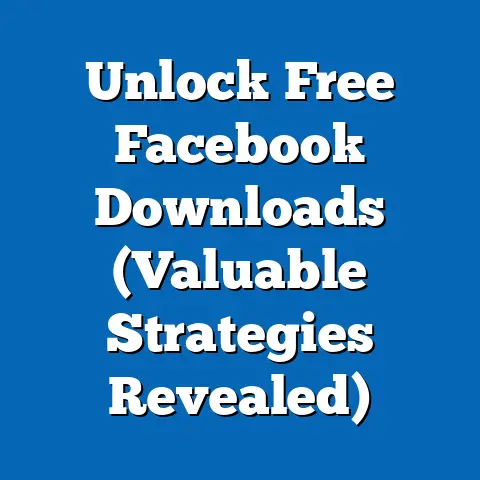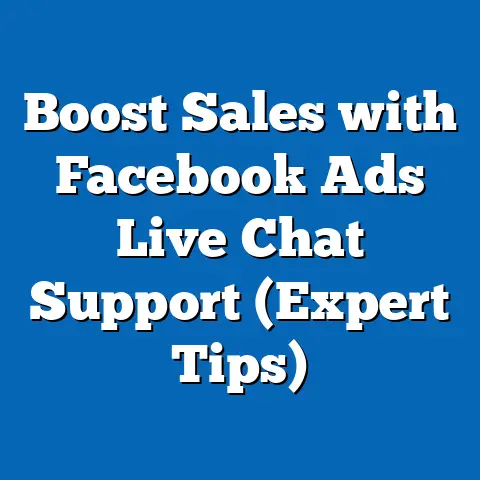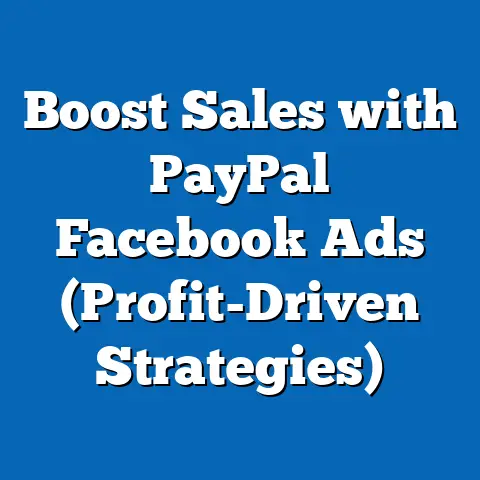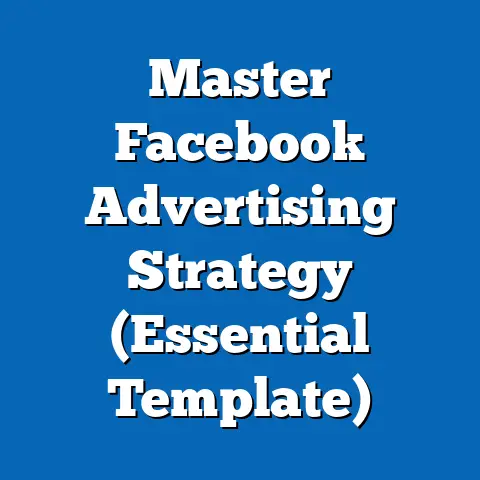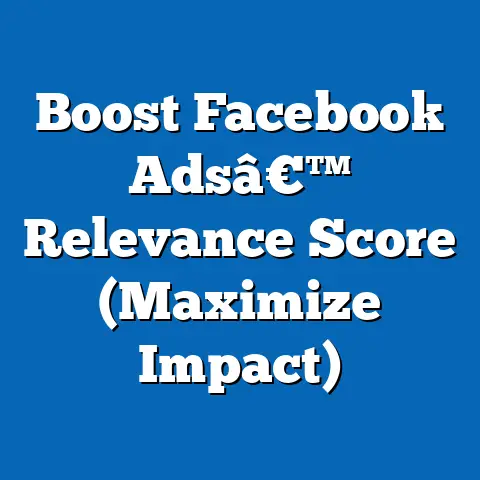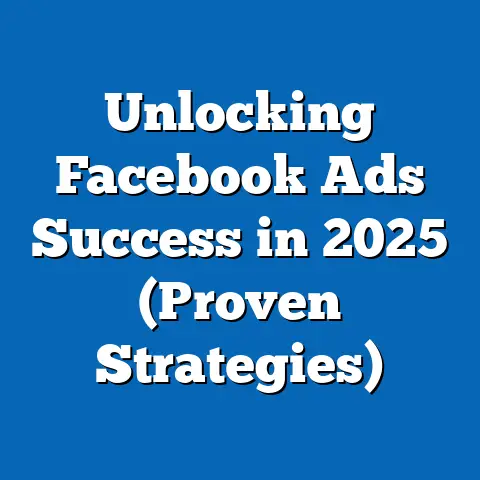Transform Facebook Ads for Builders (Game-Changing Tips)
I’ve spent years working with businesses across various industries, and I’ve seen firsthand how a well-executed Facebook Ads strategy can be a game-changer. But let’s be honest, what works for a clothing retailer isn’t necessarily going to work for a builder. The construction industry has its own unique set of challenges and opportunities, and that’s why I’m writing this guide – to provide builders with the specific, game-changing tips they need to transform their Facebook Ads.
When I talk about the “best option” for builders on Facebook, I’m not just talking about getting the cheapest clicks. I’m talking about building a sustainable, profitable advertising strategy that connects you with the right clients, generates high-quality leads, and ultimately drives business growth. It’s about understanding the nuances of the platform, crafting compelling content, and targeting your ideal customer with laser-like precision.
In this article, I’ll break down everything you need to know to leverage the power of Facebook Ads, from understanding the platform itself to implementing advanced optimization techniques. I’ll share real-world examples, actionable tips, and even a few of my own personal experiences along the way. So, let’s get started!
1. Understanding the Facebook Ads Ecosystem for Builders
Facebook is more than just a place for sharing vacation photos and political opinions. It’s a massive platform with billions of users, and a significant portion of those users are potential clients for your building business. The key is understanding how to reach them.
The Fundamentals of Facebook Ads for Builders
Facebook Ads offers a powerful suite of tools that allow you to target specific demographics, interests, and behaviors. For builders, this means you can reach homeowners, real estate developers, commercial clients, and even people who are just starting to think about renovating their kitchens.
The beauty of Facebook Ads lies in its precision. You’re not just throwing money at a billboard and hoping for the best. You’re strategically placing your message in front of the people who are most likely to be interested in your services.
- Targeting Options: Facebook allows you to target users based on demographics (age, location, income), interests (home improvement, interior design), behaviors (recent home buyers, frequent travelers), and more.
- Ad Formats: You can choose from a variety of ad formats, including image ads, video ads, carousel ads, and lead generation ads.
- Bidding Strategies: You can control how much you spend on your ads by using different bidding strategies, such as cost-per-click (CPC) or cost-per-impression (CPM).
Why Facebook Ads are Beneficial for Builders
Compared to traditional advertising methods like print ads or billboards, Facebook Ads offer several key advantages:
- Cost-Effectiveness: You can start with a small budget and scale up as you see results.
- Targeting Precision: You can reach a highly specific audience based on their demographics, interests, and behaviors.
- Measurable Results: You can track your ad performance in real-time and make adjustments as needed.
- Engagement Opportunities: You can interact with potential clients directly through comments, messages, and shares.
Demographics and User Behavior on Facebook
To effectively target your audience, you need to understand who’s using Facebook and how they’re using it.
- Age: While Facebook’s user base is diverse, the largest age group is typically between 25 and 54 – prime homeowners and potential renovation clients.
- Location: Facebook allows you to target users based on their location, down to the zip code level. This is crucial for builders who operate in specific geographic areas.
- Interests: Facebook tracks users’ interests based on the pages they like, the groups they join, and the content they engage with. This allows you to target users who are interested in home improvement, interior design, and other related topics.
Statistics About Facebook Usage in the Building Industry
Here are a few statistics that highlight the potential of Facebook Ads for builders:
- 93% of homeowners use Facebook (Source: National Association of Home Builders)
- 71% of consumers are more likely to purchase a product or service based on social media referrals (Source: Ambassador)
- Facebook is the most popular social media platform among homeowners aged 35-54 (Source: Statista)
These statistics clearly demonstrate that Facebook is a valuable platform for reaching potential clients in the building industry.
Takeaway: Understanding the fundamentals of Facebook Ads and the demographics of Facebook users is crucial for creating effective campaigns.
2. Setting Clear Goals for Your Facebook Ads
Before you even think about creating an ad, you need to define your goals. What do you want to achieve with your Facebook Ads? Are you trying to generate leads, increase brand awareness, or promote a specific service?
Defining Specific Marketing Objectives
Here are a few common marketing objectives that builders might aim for:
- Lead Generation: Collect contact information from potential clients who are interested in your services.
- Brand Awareness: Increase awareness of your brand among your target audience.
- Website Traffic: Drive traffic to your website, where potential clients can learn more about your services.
- Event Promotion: Promote open houses, home shows, or other events.
- Direct Sales: Sell specific products or services directly through Facebook.
Aligning Ads with Business Goals and Customer Needs
Your Facebook Ads should always be aligned with your overall business goals and the needs of your target audience. For example, if your goal is to generate leads, your ads should focus on offering valuable content in exchange for contact information. If your goal is to increase brand awareness, your ads should showcase your company’s expertise and highlight your unique selling propositions.
It’s crucial to understand what your potential clients are looking for. Are they looking for a reliable builder to renovate their kitchen? Are they looking for a custom home builder to build their dream home? Your ads should address these needs directly.
Example:
Let’s say you’re a custom home builder in a specific geographic area. Your business goals might be to increase the number of custom home projects you take on each year. To align your Facebook Ads with these goals, you could create ads that:
- Target potential clients in your geographic area who are interested in custom home building.
- Showcase your past custom home projects with high-quality images and videos.
- Offer a free consultation to discuss their custom home dreams.
Takeaway: Clearly define your marketing objectives and align your Facebook Ads with your business goals and the needs of your target audience.
3. Crafting Compelling Ad Content
Once you know your goals, it’s time to create compelling ad content that will capture the attention of your target audience. This includes crafting engaging ad copy and using high-quality visuals.
Guidelines for Creating Engaging Ad Copy
Your ad copy should be clear, concise, and persuasive. It should immediately grab the reader’s attention and highlight the benefits of your services.
- Use strong headlines: Your headline is the first thing people will see, so make it count. Use strong keywords and highlight the most important benefit of your service.
- Focus on benefits, not features: Instead of just listing the features of your service, focus on the benefits that your clients will receive.
- Use a clear call to action: Tell people what you want them to do, whether it’s visiting your website, filling out a form, or calling you for a consultation.
- Keep it short and sweet: People have short attention spans, so keep your ad copy concise and easy to read.
Example:
Instead of writing “We offer custom home building services,” you could write “Build Your Dream Home with Our Expert Custom Home Building Services.”
The Importance of Visuals in Facebook Ads
Visuals are crucial for capturing attention on Facebook. High-quality images and videos of your completed projects can showcase your expertise and inspire potential clients.
- Use professional-quality images and videos: Invest in professional photography and videography to showcase your best work.
- Showcase your best projects: Choose projects that are visually appealing and demonstrate your unique skills.
- Use a variety of visuals: Experiment with different types of visuals, such as before-and-after photos, 3D renderings, and drone footage.
- Optimize your visuals for Facebook: Make sure your visuals are the right size and format for Facebook Ads.
Storytelling Through Ads
One of the most effective ways to connect with potential clients is through storytelling. Share customer testimonials, case studies, and other stories that highlight the benefits of your services.
- Customer Testimonials: Share testimonials from satisfied clients who have had positive experiences working with you.
- Case Studies: Showcase specific projects and highlight the challenges you overcame and the results you achieved.
- Behind-the-Scenes Content: Give potential clients a glimpse into your company culture and the process you use to deliver your services.
Example:
You could create a video ad that features a satisfied client talking about their experience working with you to build their dream home. The video could showcase the beautiful design, the high-quality craftsmanship, and the personalized service they received.
Takeaway: Craft compelling ad copy and use high-quality visuals to capture the attention of your target audience. Use storytelling to connect with potential clients on an emotional level.
4. Targeting the Right Audience
Targeting is where Facebook Ads really shines. You can’t just blast your ads to everyone and hope for the best. You need to identify your ideal client and target your ads specifically to them.
Leveraging Facebook’s Targeting Options
Facebook offers a wide range of targeting options, including:
- Demographics: Age, gender, location, education, income, etc.
- Interests: Hobbies, interests, pages they like, groups they join, etc.
- Behaviors: Purchase history, online activity, device usage, etc.
- Connections: People who like your page, friends of people who like your page, etc.
For builders, this means you can target potential clients based on factors such as:
- Homeownership: Target homeowners who are likely to be interested in renovations or additions.
- Real Estate Development: Target real estate developers who are looking for builders for new construction projects.
- Commercial Clients: Target businesses that are looking for builders for commercial construction projects.
- Life Events: Target people who have recently moved, gotten married, or had a baby – all life events that often trigger home renovations.
Audience Segmentation Strategies
To maximize the effectiveness of your Facebook Ads, you should segment your audience based on their specific needs and interests. For example, you might create separate campaigns for:
- Kitchen Renovations: Target homeowners who are interested in kitchen design and remodeling.
- Bathroom Renovations: Target homeowners who are interested in bathroom design and remodeling.
- Custom Homes: Target potential clients who are interested in building a custom home.
- Commercial Construction: Target businesses that are looking for builders for commercial construction projects.
Creating Custom and Lookalike Audiences
Facebook also allows you to create custom and lookalike audiences.
- Custom Audiences: You can upload a list of your existing clients or website visitors to create a custom audience. This allows you to target people who are already familiar with your brand.
- Lookalike Audiences: You can create a lookalike audience based on your custom audience. Facebook will then find people who have similar characteristics to your existing clients or website visitors.
Example:
You could create a custom audience of people who have visited your website in the past 30 days. Then, you could create a lookalike audience based on that custom audience to reach new potential clients who are similar to your existing website visitors.
Takeaway: Utilize Facebook’s targeting options to reach your ideal clients. Segment your audience based on their specific needs and interests. Create custom and lookalike audiences to reach people who are already familiar with your brand or have similar characteristics to your existing clients.
5. Budgeting and Bidding Strategies for Builders
Setting an effective budget and choosing the right bidding strategy are crucial for maximizing your ROI on Facebook Ads.
Setting an Effective Budget
There’s no one-size-fits-all answer to how much you should spend on Facebook Ads. The right budget will depend on your specific goals, target audience, and industry.
However, here are a few general guidelines:
- Start Small: Begin with a small budget and scale up as you see results.
- Set a Daily or Lifetime Budget: You can set a daily budget (the average amount you’re willing to spend each day) or a lifetime budget (the total amount you’re willing to spend on a campaign).
- Consider Your ROI: Track your ad performance and calculate your return on investment (ROI). If you’re not seeing a positive ROI, you may need to adjust your budget or targeting.
Different Bidding Strategies
Facebook offers several different bidding strategies, including:
- Cost-Per-Click (CPC): You pay each time someone clicks on your ad.
- Cost-Per-Impression (CPM): You pay for every 1,000 impressions (times your ad is shown).
- Cost-Per-Action (CPA): You pay when someone takes a specific action, such as filling out a form or making a purchase.
Determining the Best Approach for Maximizing ROI
The best bidding strategy for you will depend on your specific goals and budget.
- CPC: This is a good option if you’re focused on driving traffic to your website.
- CPM: This is a good option if you’re focused on increasing brand awareness.
- CPA: This is a good option if you’re focused on generating leads or driving sales.
Example:
If you’re focused on generating leads, you might choose to use a CPA bidding strategy and only pay when someone fills out a lead generation form.
Takeaway: Set an effective budget based on your specific goals and track your ROI. Experiment with different bidding strategies to determine which one works best for you.
6. Utilizing Facebook Ad Formats Effectively
Facebook offers a variety of ad formats, each with its own strengths and weaknesses. Choosing the right ad format can significantly impact the success of your campaigns.
Exploring Various Ad Formats
Here are a few of the most popular ad formats on Facebook:
- Image Ads: These are simple ads that feature a single image and a short amount of text.
- Video Ads: These ads feature a video and can be very engaging.
- Carousel Ads: These ads allow you to showcase multiple images or videos in a single ad.
- Slideshow Ads: These ads create a video-like experience using a series of images.
- Lead Generation Ads: These ads allow you to collect contact information from potential clients directly within Facebook.
Relevance to Builders
Each ad format can be effective for builders, depending on the message you’re trying to convey.
- Image Ads: Great for showcasing completed projects with stunning photography.
- Video Ads: Ideal for sharing customer testimonials, showcasing your team, or providing a virtual tour of a completed home.
- Carousel Ads: Perfect for showcasing a series of related images, such as before-and-after photos of a renovation project or different stages of a custom home build.
- Slideshow Ads: A cost-effective way to create a video-like experience using a series of images.
- Lead Generation Ads: Excellent for collecting contact information from potential clients who are interested in your services.
Examples of Successful Ad Formats Used by Builders
I’ve seen builders have great success with video ads showcasing customer testimonials. Nothing beats a happy customer sharing their positive experience. Carousel ads are also effective for showcasing the breadth of your work, allowing potential clients to see a variety of projects in one ad.
Takeaway: Experiment with different ad formats to see which ones resonate best with your target audience. Consider the message you’re trying to convey and choose the ad format that is most effective for communicating that message.
7. A/B Testing and Optimization Techniques
A/B testing is the process of comparing two versions of an ad to see which one performs better. This is crucial for optimizing your Facebook Ads and maximizing your ROI.
The Importance of A/B Testing
A/B testing allows you to make data-driven decisions about your ads. Instead of guessing what will work best, you can test different variations and see which ones actually perform better.
How Builders Can Implement A/B Testing
Here are a few things you can A/B test on Facebook Ads:
- Headlines: Test different headlines to see which ones grab the most attention.
- Ad Copy: Test different ad copy to see which one is most persuasive.
- Images: Test different images to see which ones are most visually appealing.
- Call to Action: Test different calls to action to see which one drives the most conversions.
- Targeting: Test different targeting options to see which ones reach the most relevant audience.
Tips for Analyzing Ad Performance
Once you’ve run your A/B tests, it’s important to analyze the results and make data-driven optimizations.
- Track Key Metrics: Track metrics such as click-through rate (CTR), conversion rate, and cost per acquisition (CPA).
- Identify Winning Variations: Identify the variations that performed best and use them in your future ads.
- Continuously Test and Optimize: A/B testing is an ongoing process. Continuously test and optimize your ads to improve your performance.
Example:
You could A/B test two different headlines for your kitchen renovation ad. One headline could be “Transform Your Kitchen with Our Expert Renovation Services,” and the other headline could be “Get a Free Kitchen Renovation Consultation.” By tracking the click-through rate of each headline, you can determine which one is more effective at grabbing attention.
Takeaway: Implement A/B testing to make data-driven decisions about your ads. Track key metrics, identify winning variations, and continuously test and optimize your ads to improve your performance.
8. Integrating Facebook Ads with Other Marketing Channels
Facebook Ads should be part of a larger marketing strategy that includes other channels, such as Instagram, Google Ads, and email marketing.
Creating a Cohesive Marketing Strategy
By integrating your Facebook Ads with other marketing channels, you can create a more cohesive and effective marketing strategy.
- Use Consistent Messaging: Ensure that your messaging is consistent across all of your marketing channels.
- Retargeting: Retarget website visitors on Facebook with ads that are relevant to the pages they visited.
- Cross-Promote Your Content: Promote your blog posts, videos, and other content on Facebook.
- Drive Traffic to Your Website: Use Facebook Ads to drive traffic to your website, where potential clients can learn more about your services.
The Significance of Retargeting Strategies
Retargeting is a powerful strategy that allows you to target people who have already interacted with your brand. For example, you can retarget people who have visited your website, watched your videos, or engaged with your Facebook page.
By retargeting these people, you can stay top-of-mind and increase the likelihood that they will eventually become clients.
Example:
You could retarget people who have visited your kitchen renovation page on your website with ads that showcase your kitchen renovation services.
Takeaway: Integrate your Facebook Ads with other marketing channels to create a more cohesive and effective marketing strategy. Utilize retargeting strategies to stay top-of-mind and increase the likelihood that potential clients will eventually become clients.
9. Case Studies of Successful Facebook Ad Campaigns for Builders
Let’s take a look at some real-life examples of builders who have successfully transformed their businesses through effective Facebook Ads.
Real-Life Examples
I’ve seen a local custom home builder increase their leads by 30% in just three months by implementing a targeted Facebook Ads campaign. They focused on showcasing their stunning custom home designs with high-quality photography and targeted homeowners in affluent neighborhoods.
Another example is a remodeling company that used video ads featuring customer testimonials to increase their brand awareness and generate leads. The videos were authentic and relatable, and they resonated with potential clients who were looking for a reliable and trustworthy contractor.
Analyzing Success Factors and Lessons Learned
These campaigns were successful because they:
- Had Clear Goals: They knew exactly what they wanted to achieve with their Facebook Ads.
- Targeted the Right Audience: They targeted their ideal clients with laser-like precision.
- Created Compelling Content: They created engaging ad copy and used high-quality visuals.
- Utilized A/B Testing: They continuously tested and optimized their ads to improve their performance.
- Integrated with Other Marketing Channels: They integrated their Facebook Ads with other marketing channels to create a more cohesive and effective marketing strategy.
Takeaway: Learn from the successes of other builders who have transformed their businesses through effective Facebook Ads. Implement the strategies and techniques that have worked for them and adapt them to your own specific needs and goals.
10. Future Trends in Facebook Advertising for Builders
The world of Facebook advertising is constantly evolving. It’s important to stay up-to-date on the latest trends and innovations so you can continue to effectively reach your target audience.
Upcoming Trends and Innovations
Here are a few trends to keep an eye on:
- Artificial Intelligence (AI): AI is becoming increasingly important in Facebook advertising. AI-powered tools can help you automate tasks, optimize your campaigns, and improve your targeting.
- Augmented Reality (AR): AR is starting to be used in Facebook Ads to allow users to virtually try on products or visualize how furniture would look in their homes. This could be a valuable tool for builders to showcase their designs.
- Personalization: Personalization is becoming increasingly important in advertising. People want to see ads that are relevant to their interests and needs.
- Video Marketing: Video continues to be a powerful format for engaging potential clients. Short-form video, in particular, is gaining popularity.
Staying Ahead of the Curve
To stay ahead of the curve, I recommend:
- Following Industry Blogs and Publications: Stay up-to-date on the latest trends and innovations in Facebook advertising.
- Attending Industry Events: Network with other marketers and learn from the experts.
- Experimenting with New Features: Don’t be afraid to try out new features and tools on Facebook.
Takeaway: Stay up-to-date on the latest trends and innovations in Facebook advertising. Experiment with new features and tools to see how they can help you improve your campaigns.
Conclusion
Transforming your Facebook Ads strategy as a builder takes dedication, a willingness to learn, and a commitment to consistent optimization. By understanding the platform, setting clear goals, crafting compelling content, targeting the right audience, budgeting effectively, utilizing the right ad formats, implementing A/B testing, integrating with other marketing channels, learning from case studies, and staying up-to-date on the latest trends, you can effectively transform your approach to Facebook Ads and achieve your business goals.
I’ve seen firsthand the incredible results that builders can achieve with a well-executed Facebook Ads strategy. I encourage you to embrace the power of Facebook as a marketing platform and elevate your business to new heights. Don’t be afraid to experiment, test, and learn. The key is to stay persistent and always be looking for ways to improve your campaigns. Good luck!

